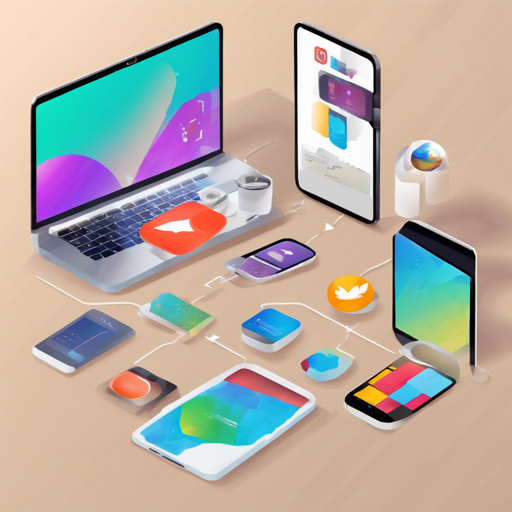Are you ready to step into the realm of cross-platform app development with Flutter? Imagine being able to seamlessly run your apps on Android, iOS, and desktop without having to juggle heavy virtual machines. In this guide, we’ll walk you through simulating your Flutter project using the FRAME device. Let’s dive into the magic of Flutter!
Setting Up Your Project
To get started, you need to add the necessary packages to your project. Use the following command to integrate the required libraries:
bash
flutter pub add simulatedart
Next, open your main.dart file and include the packages that you just added:
dart
import 'package:flutter/material.dart';
import 'package:general_lib_flutter/general_lib_flutter.dart';
import 'package:simulate/simulate.dart';
Understanding the Code: Using an Analogy
Visualize your app as a bustling restaurant. Each table represents a platform (Android, iOS, Desktop). Just like a master chef who needs to ensure that each dish is served perfectly across various tables, the following code ensures your app functions seamlessly in all environments.
- The
Simulate.ensureInitialized()is like preparing the kitchen with all the necessary ingredients. Without these preparations, the cooking (or in our case, the app running) won’t go smoothly. - The usage of
GeneralLibFlutterAppis akin to setting the right atmosphere in the restaurant, adjusting lighting and decor (theme) based on customer preferences (user settings). - Finally, the home screen
Home()acts like the menu offering delightful options to your customers, allowing them to navigate through various choices.
Creating Your Main App Structure
Let’s write the structure of your main application. Here’s how you set up the main app widget:
dart
void main() async {
await Simulate.ensureInitialized();
runApp(const App());
}
class App extends StatelessWidget {
const App(super.key);
@override
Widget build(BuildContext context) {
// Automatically change theme to dark mode and white mode
return GeneralLibFlutterAppMain(
generalLibFlutterApp: GeneralLibFlutterApp(),
builder: (themeMode, lightTheme, darkTheme, widget) {
return MaterialApp(
debugShowCheckedModeBanner: false,
theme: lightTheme,
darkTheme: darkTheme,
themeMode: themeMode,
home: Simulate(
generalLibFlutterApp: GeneralLibFlutterApp(),
isShowFrame: true, // Set false to disable
isShowTopFrame: true,
isShowExperimental: true,
home: MaterialApp(
theme: lightTheme,
darkTheme: darkTheme,
themeMode: themeMode,
debugShowCheckedModeBanner: false,
showPerformanceOverlay: false,
home: const Home(),
),
),
);
},
);
}
}
Building the Home Screen
Creating a welcoming home screen is essential. In the following code block, we define what appears when the app is launched:
dart
class Home extends StatefulWidget {
const Home(super.key);
@override
State createState() => _HomeState();
}
class _HomeState extends State {
@override
Widget build(BuildContext context) {
return Scaffold(
appBar: PreferredSize(
preferredSize: const Size.fromHeight(512),
child: Container(
decoration: const BoxDecoration(color: Colors.blue),
child: const Column(mainAxisSize: MainAxisSize.min, children: [Row(children: [],)]),
),
),
body: const Center(child: Text('Alow')),
floatingActionButton: FloatingActionButton(
onPressed: () {
Navigator.push(context, MaterialPageRoute(builder: (context) {
return const LoginScreen();
}));
},
child: const Icon(Icons.login),
),
);
}
}
Troubleshooting Tips
As with any development process, you may run into some hiccups. Here are some troubleshooting tips:
- Ensure you have all the necessary packages installed. If you encounter package errors, recheck your dependencies in
pubspec.yaml. - If your app isn’t displaying correctly, double-check your theme settings to ensure they’re being applied.
- In case of build errors, try running
flutter cleanand thenflutter pub getto refresh your build environment. - Check your code for any missing or misplaced brackets and syntax errors.
For more insights, updates, or to collaborate on AI development projects, stay connected with fxis.ai.
Final Thoughts
Simulating your Flutter project on multiple platforms opens up a world of opportunities. By following this guide, you’ll have a foundational understanding to build upon. With Flutter, creating apps that work beautifully across devices is truly within reach.
At fxis.ai, we believe that such advancements are crucial for the future of AI, as they enable more comprehensive and effective solutions. Our team is continually exploring new methodologies to push the envelope in artificial intelligence, ensuring that our clients benefit from the latest technological innovations.

